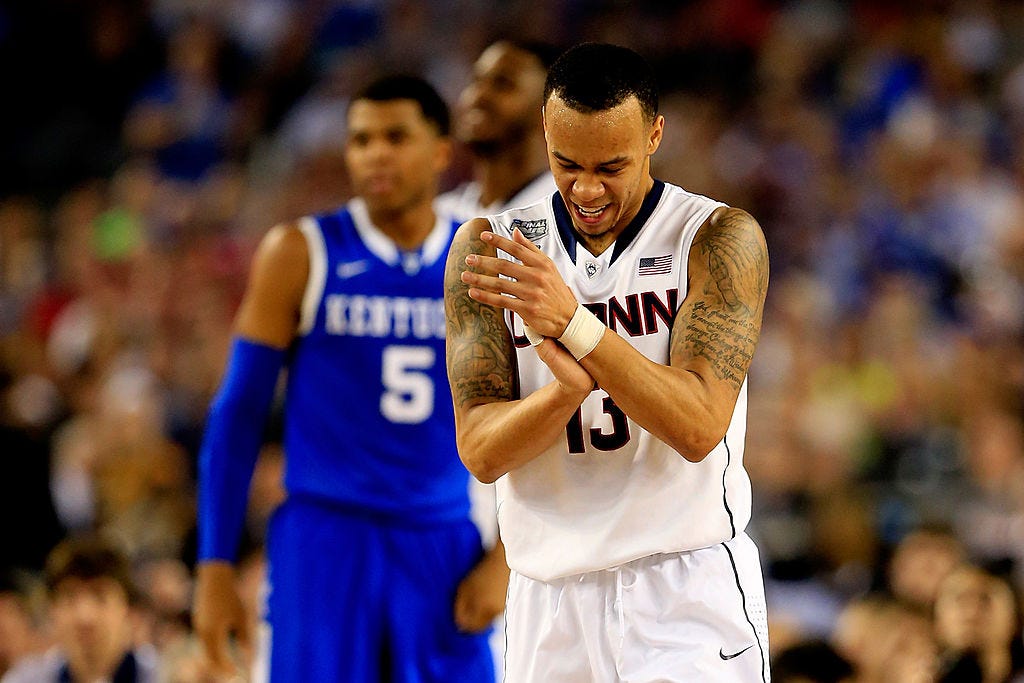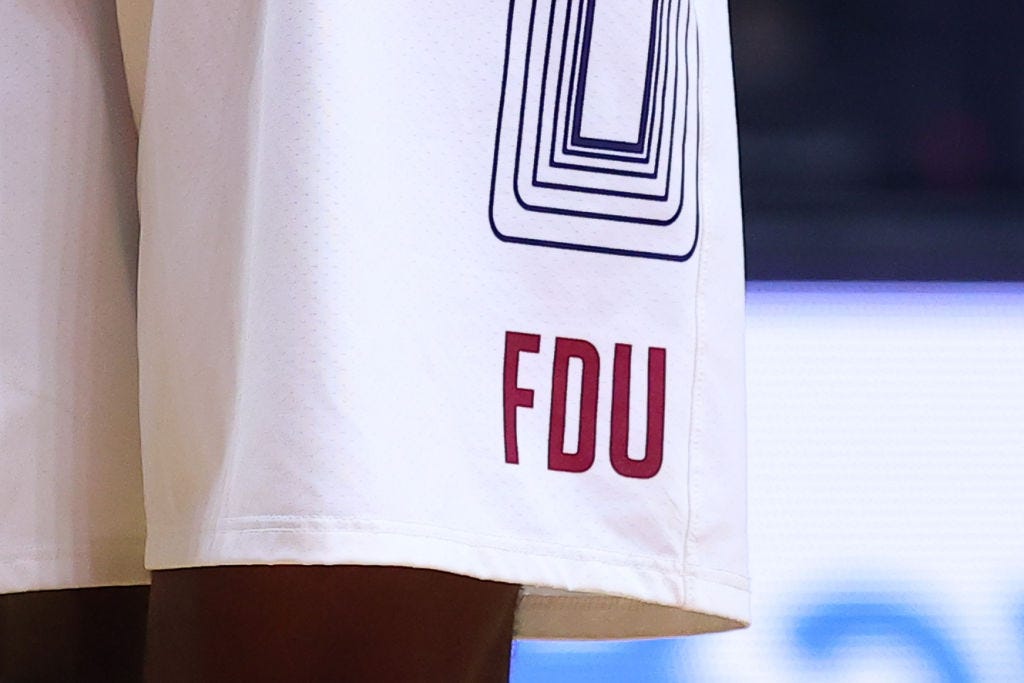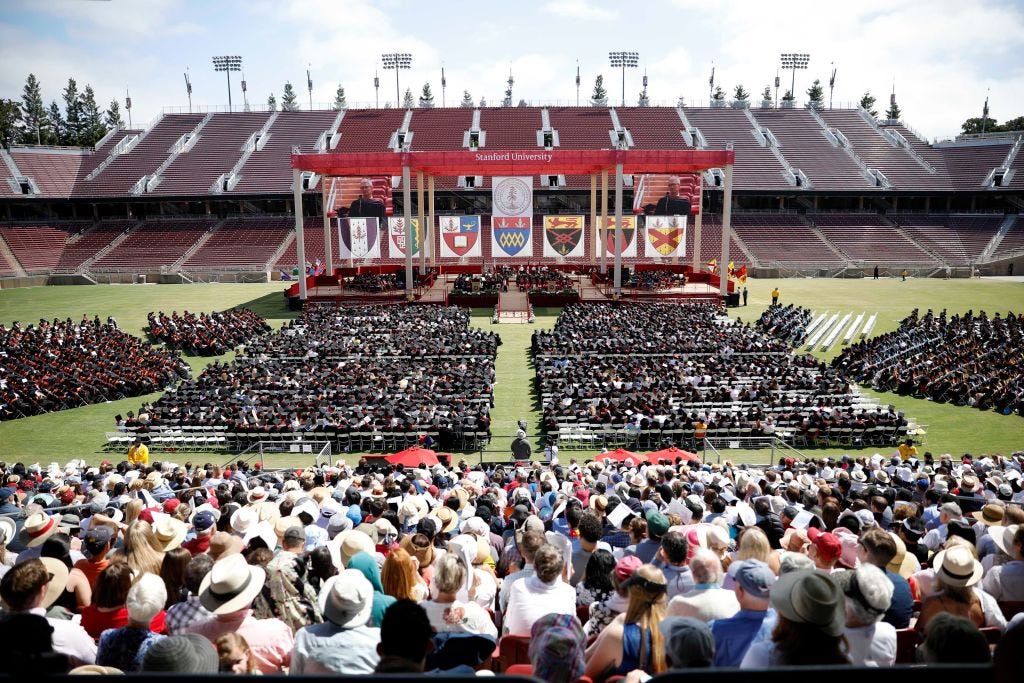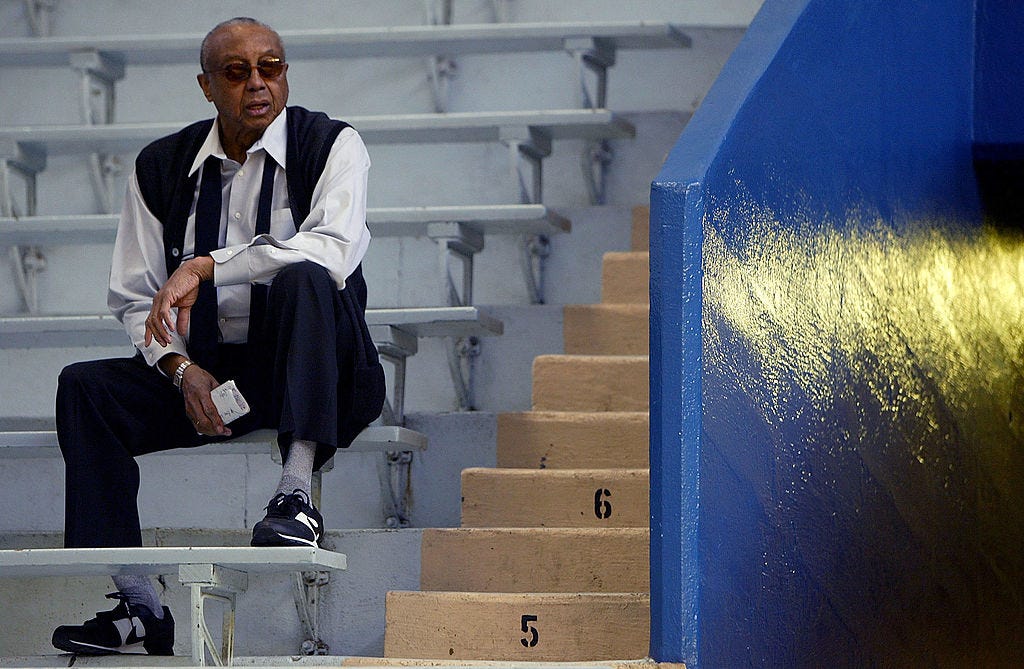Global Sport Matters: The College Sports 2.0 Issue (Part II)
Helping hungry and homeless athletes, the NCAA's regressive new transgender policy, why "non-revenue" sports are anything but, fixing education for Black athletes, and Black coaches coming together.
Welcome to Hreal Sports, a newsletter written by Patrick Hruby about sports things that don’t stick to sports. Sign up and tell your friends!
Hello again! I’m thrilled to share the second batch of stories for the latest issue of Global Sport Matters, the digital publication of the Global Sport Institute at Arizona State University. As I’ve mentioned before, we cover a wide range of outside the lines, sports and society topics though original research and reporting, and via podcasts, live events, standalone articles, and monthly themed issues.
Our March issue is on College Sports 2.0. Last summer, National Collegiate Athletic Association president Mark Emmert openly acknowledged it was “the right time” to ask the question “if we were going to build college sports again, and in 2020 instead of 1920, what would that look like?”
Our issue is devoted to answers. You can find links and summaries to our first batch of stories by clicking here. Below are more links and summaries for stories on helping hungry and homeless athletes, the NCAA's regressive new transgender policy, why "non-revenue" sports are anything but, fixing education for Black athletes, and Black coaches coming together. Hope you enjoy!
“Yes, Some College Athletes Face Food Insecurity. Colleges Can Change That,” by Chloe McKenzie.
As a result of playing for no pay, college athletes often face food insecurity. Allowing compensation and providing directed assistance to athletes from lower-income families can ensure no athlete goes without a basic necessity.
According to a national survey, however, nearly a quarter of Division I athletes experience food insecurity. And more than one in ten experience homelessness.
The survey, which sampled over 3,500 college athletes in 2019, was conducted by the Hope Center for College, Community, and Justice at Temple University, where I was a research fellow. Including athletes from all three NCAA divisions as well as community colleges, the survey found that:
Twenty-four percent of Division I athletes reported experiencing food insecurity – defined by the U.S. Department of Agriculture as limited or uncertain availability of nutritionally adequate and safe food, or the ability to acquire such food in a socially acceptable manner – in the prior 30 days.
About half of the athletes described above were assessed at the lowest level of food security, meaning they were cutting the size of their meals, skipping meals, and/or going without food for a day or more because of a lack of money.
Division II and Division III athletes had similar levels of food insecurity at rates of 26 percent and 21 percent, respectively.
Athletes at two-year colleges had a 39 percent rate of food insecurity, and nearly a quarter of all athletes at two-year colleges were assessed at the lowest level.
Nearly 14 percent of Division I athletes reported being homeless – defined as not having a fixed, regular, and adequate place to live – in the prior 12 months.
Athletes in Division II and Division III reported homelessness rates of 19 percent and 13 percent, respectively, while 20 percent of athletes at two-year colleges reported being homeless.
These numbers are shocking and distressing. It is difficult to reconcile educating students and ensuring their well-being – the purported mission of college athletics – with hunger and homelessness. Research has shown what most of us already know intuitively: If you’re hungry and don’t have a place to sleep, your grades, performance on the field, and overall health all suffer.
“As Most Universities Cut Sports to Balance the Books, Fairleigh Dickinson Added Two – and Made More Money,” by Leander Schaerlaeckens.
Popular belief in U.S. college sports during the coronavirus pandemic was that cutting sports would save money, but Fairleigh Dickinson University embraced a new economic model prioritizing enrollment over scholarship spots, and brought in more revenue thanks to two brand-new sports programs.
As the COVID-19 pandemic moved from its first academic semester into its second – and the realization set in that it would go on for a good, long while – many college athletic departments across the U.S. found themselves making the same decision. Their schools had suffered steep and unexpected financial losses: room and board fees that had to be refunded, freshman classes that were alarmingly undersized, virus-mitigating health and safety measures that didn’t come cheap. There was a mounting pressure to cut costs, and schools responded by eliminating varsity sports teams – 352 of them, to be exact, during the first nine months of the pandemic alone.
In almost every case, these were unpopular choices. But they also were viewed as decisions that made economic sense. In a time of fiscal uncertainty, ditching purportedly money-losing sports such as tennis and track and field was an unfortunate but perfectly reasonable way for athletic departments and schools to tighten their belts.
Or was it?
While these cuts played out, Fairleigh Dickinson University, a small private institution in New Jersey that accepted 88.9 percent of applicants in 2020, didn’t downsize its varsity offerings. Instead, it started a women’s lacrosse squad – and a men’s volleyball team, too. The school added both sports not only because its leadership believes that having more teams is good for FDU’s brand and student outcomes, but also because it sees those teams as a good financial investment.
In doing so, FDU and other schools like it have rejected the college sports orthodoxy that so-called “non-revenue” sports are fiscal drains, charity cases propped up by the outsized ticket, television, and sponsorship revenues generated by men’s basketball and football. Instead, these schools understand that while many sports look like cost centers on athletic department budgets, they actually produce profits for institutions, generating tuition and other traditional sources of university income as opposed to sports-related ones.
“Fixing College Athlete Education Starts With Black Students,” by Eddie Comeaux.
Data collection and reform by the NCAA have not been effective in creating a better educational experience for Black college athletes. By enforcing equity in education and tending to the unique mental health needs of Black athletes, the NCAA can undo antiblackness within the association.
Questions have been raised about whether Division I Black athletes are being educationally reimbursed for their on-field labor, or if they are even receiving meaningful educations at all. The current structures of college sports make it more challenging – and perhaps less likely – for Black athletes to fully engage in high-impact educational activities and to prepare for quality school-to-career transitions. To change this dynamic, I recommend the following:
Schools must collect data on the college athlete experience by race/ethnicity, gender, and type of sport. The use of evidence within athletic departments provides a unique opportunity to comprehensively study the college athlete experience, including student learning. This is not simply an academic exercise: When athletic personnel are engaged in the kind of high-quality data collection that influences their practices, they are more likely to be critically aware of the academic and personal issues that Black athletes encounter, and they are more likely to respond in meaningful, supportive, and engaging ways. A well-developed data monitoring strategy should help inform academic policies that limit academic major clustering and major choices that do not align with athletes’ academic interests and career aspirations.
The NCAA and its member institutions should reduce credit hours and develop a degree-completion fund for athletes. Athletes should be permitted to take fewer than the 12 credits required during their playing seasons to allow them to better balance their academic and athletic roles. Moreover, conferences should be required to use television revenue to support academic completion for athletes who want to complete their undergraduate degrees because they did not accumulate enough credits while they were playing sports. Schools want the best out of athletes on the field and in the classroom; athletes should be given a realistic amount of time and support to excel in both areas.
The NCAA and its member institutions should reconsider and redefine the National Letter of Intent (NLI). While opportunities continue to expand for students who participate in college athletics, the NLI primarily favors the college or university. It provides little protection for athletes because they are not able to negotiate the terms of their contracts. Athletes, moreover, are afforded no alternatives apart from rejecting or accepting the agreement, usually known as a contract of adhesion.
“An NCAA Policy On Trans Athletes Shouldn’t Take Sport Out of Young Athletes’ Lives,” by Valerie Moyer.
The NCAA this year updated its policy on transgender athlete participation, but in doing so, the association also created more logistical hurdles for college athletes, leading many to wonder whether some may simply leave sport entirely while the NCAA sorts out its rules.
Under the NCAA’s new policy, which will begin in the 2022-23 academic year, trans athletes will need “documented [testosterone] levels at the beginning of their season,” a second test six months after the first, and a third test four weeks prior to championship selections. While the previous policy also required documented tests and a review panel, it stopped short of requiring this kind of consistent testing.
In addition, the NCAA has now opened the door for transgender athletes to be subject to excessive testing and stringent testosterone limits from national governing bodies. USA Swimming has already taken this approach by implementing a 36-month period in which trans women’s testosterone must be below 5 nanomoles per liter (nmol/l). That 36-month window is much longer than many existing policies. While the NCAA has stated it will not follow USA Swimming guidelines for the 2022-23 school year, the NCAA does indicate a phased rollout that would adhere to more stringent policies in adherence with the national governing bodies for each sport.
For transgender college athletes, all of this means extra hassle, work, and stress atop the day-to-day challenges of studying, training, competing, and facing transphobia in its various manifestations. Athletes will have to navigate medical systems and insurance coverages to ensure that they get their blood test results at the correct time to maintain their eligibility. They will effectively be held to multiple standards at once – those of the NCAA and those of their specific sport’s governing body. Different athletes at the same school likely will end up following different sets of rules.
“‘We Don’t Cover Our Plate’: Black Basketball Coaches’ Social Connections in a Time of Social Distancing,” by Scott Brooks.
The COVID-19 pandemic and the social uprisings in the wake of George Floyd's murder created unrest and upheaval among all people, but in the unique world of college basketball, coaches found that the best way to adapt was to come together. Can community help us rebuild what has been broken?
Of the 1,073 head coaches in all NCAA sports at Power Five schools, only 7 percent are Black. Of the Power Five schools, 15 do not employ a single Black head coach in any NCAA sport, and all but six schools have two or fewer Black head coaches. By comparison, women’s and men’s basketball get high marks for hiring Black head coaches.
But the numbers are poor in collegiate basketball, especially considering the percentage of Black athletes. In women’s Division I basketball, Black women made up 48 percent of the players. In men’s Division I basketball, Black men made up 51 percent of the players. Nearly 63 percent of this past year’s women’s college basketball All-America team members were Black women, according to the U.S. Basketball Writers' Association. And 80 percent of this past year’s men’s college basketball All-America team were Black men, per USA Today.
Like Chaney and Big John, most Black head coaches were once Black athletes, All-Americans, and conference and national champions. They transition from athletes to assistant coaches. In Division I women’s basketball programs, according to the NCAA, Black women make up 39 percent of assistant coaches. In Division I men’s basketball programs, Black men make up 55 percent of assistant coaches. Black coaches are bottlenecked in assistant coaching jobs, where they have and continue to be called “recruiters” and where they are praised for being “good with players” but said to lack knowledge of the game’s Xs and Os. Yet they have coached All-Americans and conference and national champions.
It is nearly 50 years since the passing of Title IX, and yet Black women hold just 12 percent of head coaching positions in Division I women’s basketball, while White women and men hold 82 percent of the head coaching positions. Black men hold just 15 percent of head coaching positions in Division I men’s basketball, while White men hold 81 percent of the head coaching positions. Black coaches were good enough to play but are not good enough to lead.
This has been Hreal Sports, a newsletter written by Patrick Hruby about sports things that don’t stick to sports. If you have any questions or feedback, contact me at my website, www.patrickhruby.net. And if you enjoyed this, please sign up and share with your friends.









